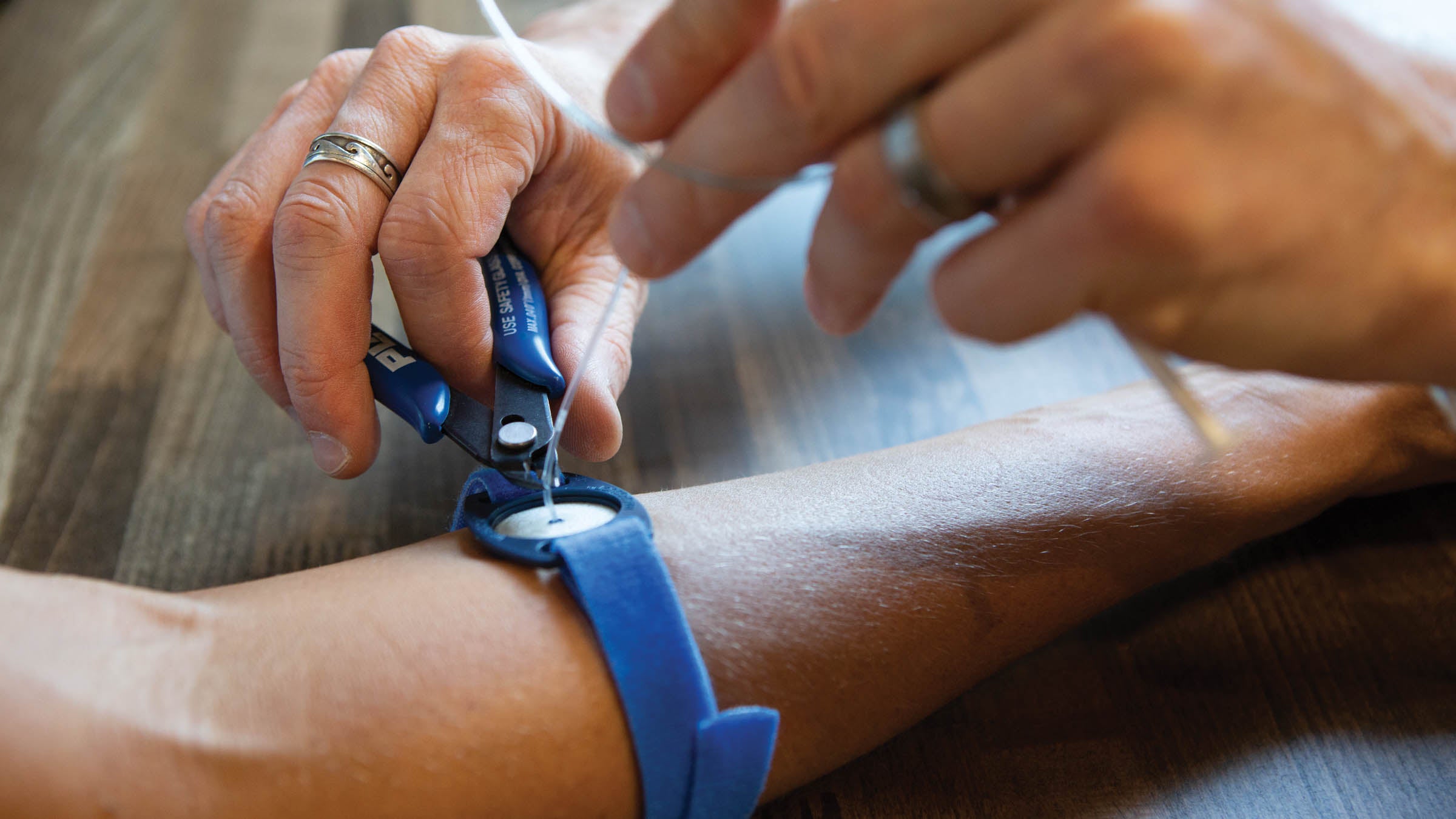Sweat Testing 101

(Photo: Brad Kaminski)
Want to understand sweat testing? First you need to understanding sweating—and why your body sweats differently than someone else’s. There’s a ferocious physiological battle going on every time you start a long race or begin a hard training session. It’s a fight that’s centered around your body desperately trying to maintain homeostasis.
Homeostasis is a term that describes the way the body maintains a relatively stable internal environment in the face of various changes and challenges from the outside world—think core body temperature, blood pressure, and pH levels. Ultimately, fatigue and slowing down is usually traced back to a failure of homeostasis in one way or another. When you exercise for prolonged periods (particularly in the heat), homeostasis is challenged by the loss of blood plasma volume and electrolytes that can occur through sweating.
Sweating
Sweating is an extremely effective way of cooling down, and it’s the main reason we can continue to exercise for prolonged periods—even in pretty hot conditions. (Ironman World Champs, anyone?) However, it is a double-edged sword, as it also can cause the potential loss of too much fluid (and electrolytes) from the blood—where the fluid for sweat is drawn from—decreasing cardiovascular function, and that can make us slow down or collapse if it goes unchecked for too long.
Hydrating
Clearly, drinking to hydrate and replace lost sweat is critical for performance. But the question of exactly how much and what to drink has a long and controversial history in the field of sports science, with seemingly little in the way of a consensus on what best practice is. Enter sweat testing.
Why Sweat Test?
One big reason there is no consensus or one-size-fits-all piece of advice for athletes on how much and what to drink is that everyone’s sweat is different.
It’s different in both the total amount of sweat lost during a given workout or race and also very different in the level of sodium (the key electrolyte lost in sweat). Sweat rates can vary five-fold and sweat sodium concentrations 10-fold between individuals. This leads to massive potential differences in net fluid and sodium losses between athletes, even those competing at the same or similar events.
All of this means that it’s impossible to make generalized fluid and sodium suggestions that will be adequate for all athletes to meet their hydration needs and keep homeostasis in check in all situations. Cue the potential for much argument and conflict when strategies that work for one person are totally ineffective for another!
Sweat testing seeks to help athletes tailor their own fluid and sodium intake parameters by establishing two key factors: your sweat rate (i.e., how much fluid you lose per hour) and sweat sodium concentration (i.e., the amount of sodium you lose in your sweat).
Sweat testing is often misunderstood or misrepresented as a method for getting a very exact hydration prescription, when in reality it’s actually more productive to think of it as giving an athlete ballpark guidance on how much fluid and sodium they will likely need.
The ballpark figures derived from sweat tests can then be used to create a rough sodium and fluid intake strategy that is further refined by trial and error in training—and then adjusted on the fly by the athlete listening to their body on race day.
How to Do a Sweat Rate Test
Estimating your sweat rate is simple and only requires a set of bathroom scales. Simply weigh yourself before and after a workout—and account for the weight of any food or liquid consumed during the workout. The weight loss in kilograms can then be easily converted to a rough estimate of sweat rate in milliliters (1kg of weight loss = ~1 liter of sweat output).
Repeat this a few times in race simulation conditions (environment, mode, and intensity) and you start to build up a rough idea of how much fluid you’ll probably lose per hour in a race.
How to Do a Sweat Sodium Test
Sodium loss tests usually require some kind of lab analysis (although wearable sweat patches to measure sodium loss on the skin are starting to emerge) but the good news is that it’s probably only something you need to do once or twice, as sweat sodium levels remain generally stable within an individual.
One common method involves applying absorbent patches to the skin which are then collected after an exercise session and squeezed out into syringes so that the sweat can be sent to a lab for analysis.
Getting to know your own numbers around sweat rate and sweat sodium loss is extremely useful if you’re aiming to perform at your best in longer and hotter events. The knowledge allows you to conduct some targeted trial and error in training so that you can show up on race day and be confident in consuming the right volume of fluid and amount of sodium to perform at your very best.
Looking for more insight on lab-based sweat tests, check out: Sweat Testing Without Working Out? We Tried It.